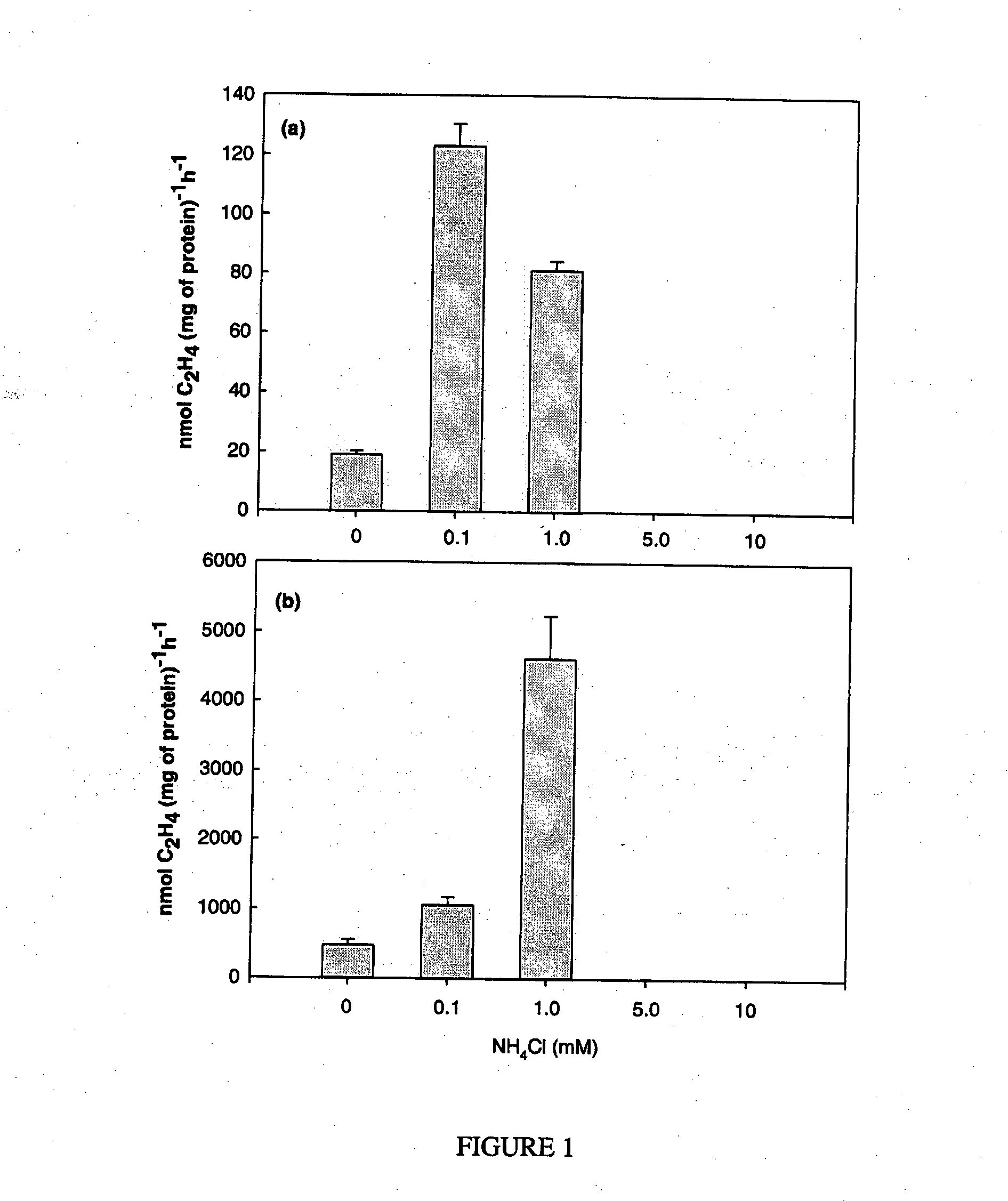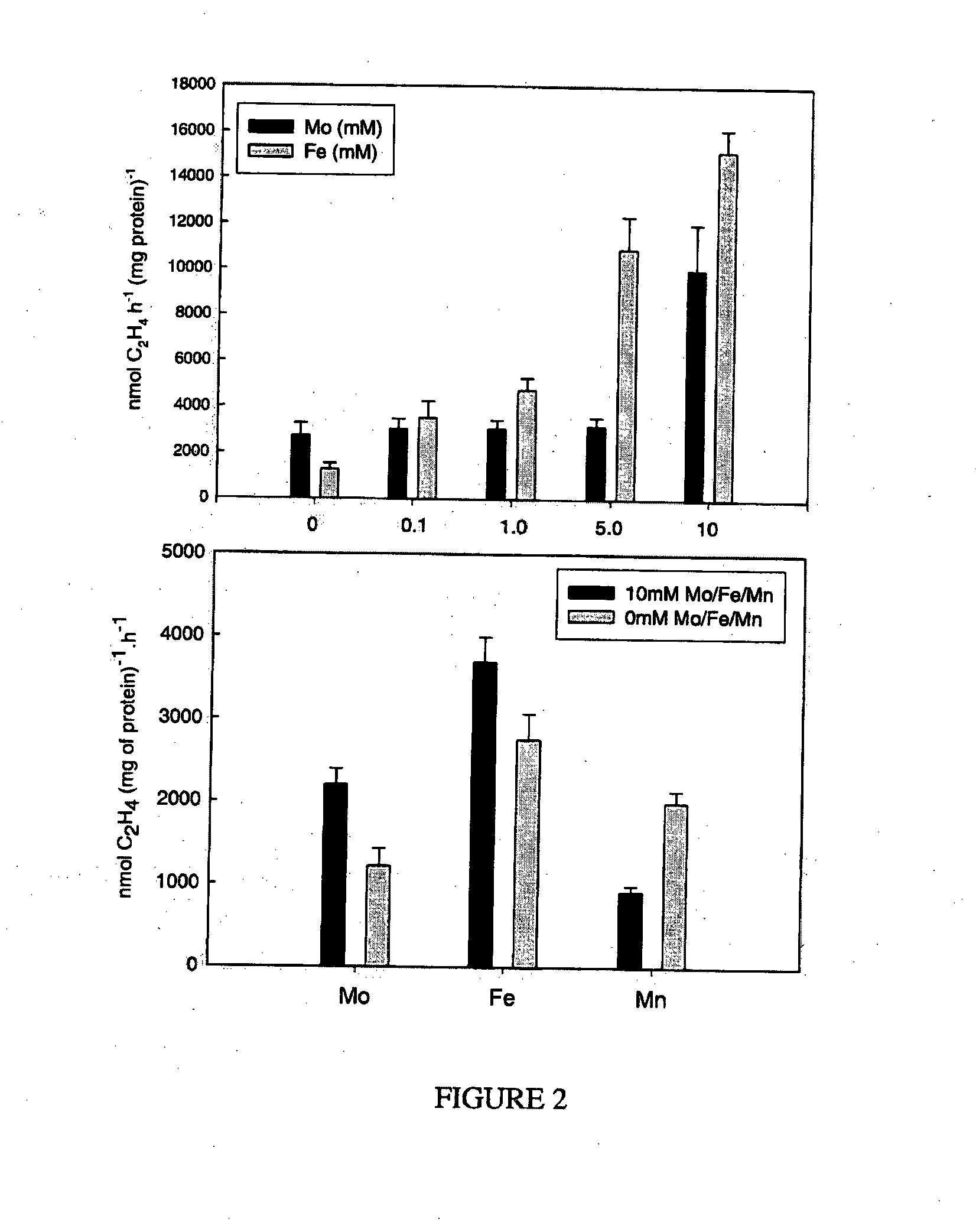Nitrogen-fixing bacterial inoculant for improvement of crop productivity and reduction of nitrous oxide emission
a technology of nitrogen-fixing bacteria and crop productivity, which is applied in the direction of bacteria-based processes, biocide, enzymology, etc., can solve the problems of little research on natural-occurring diazotrophs in i>jatropha/i>nor the application of these microorganisms to improve plant productivity and improve crop productivity. , to achieve the effect of strong activity and enhanced activity
- Summary
- Abstract
- Description
- Claims
- Application Information
AI Technical Summary
Benefits of technology
Problems solved by technology
Method used
Image
Examples
example 1
Isolation of Diazotrophic Endophytes
[0041]Jatropha (Jatropha curcas L.) cultivars were sampled from the research plots of Agrotechnology Experimental Station located at Lim Chu Kang, Singapore. Plants were sampled from three trees of different cultivars that included origin from Indonesia, China and India. The root samples (˜1.2-2 cm dia) with adhering soil were carefully removed from root with a trowel and collected in sterile plastic bags. Stem cuttings (˜1.5 to 2.5 cm diameter) were removed from the plants with clippers and matured third leaves (non-pathogenic) from healthy branches that were placed on ice for shipment from the field to laboratory and processed immediately. Root, stem cuttings (˜-50 g) and leaf (˜15-20 g) samples were thoroughly washed in distilled water, surface sterilized for 1 min in 90% ethanol followed by 10 min in 15% H2O2 and rinsed 3-5 times in sterile distilled water. A 100-μl sample of the water from the third rinse was plated on rich medium to verify t...
example 2
Bacterial Inoculants and Culture Conditions
[0042]Methylobacterium strains were grown in liquid medium 869 (Barac et al., 2004) with 1% methanol as the carbon source. Root isolates were cultivated in liquid medium 869 or 2xYT without methanol. All cultures were incubated at 30° C. and grown until early stationary phase. Just before inoculation, cells were harvested (10000 rpm, 8 min), washed once and resuspended in SDW or 10 mM MgSO4 solution, the optical density at 600 nm (OD600 nm) was adjusted, and inoculated as follows: for root inoculation, equal volume of cell suspension (OD600 nm=1.0 or 108 cfu ml−1) of each isolate was mixed and added at the time of sowing and at 15 days after sowing (DAS); for leaf inoculation, mixed or individual isolate was given as foliar spray till the wetting of leaves at 15 and 30 DAS (volume varied depending on the plant size and leaf number).
example 3
nifH Amplification and Sequencing
[0043]The presence of the nifH gene was determined by a PCR as described by Pinto-Tomás et al. (2009). To amplify nifH gene using universal primers nif-Fo (5′-AAA GGY GGW ATC GGY AAR TCC ACC AC-3′; SEQ ID NO:1) and nif-Re (5′-TTG TTS GCS GCR TAC ATS GCC ATC AT-3′; SEQ ID NO:2) using the stringent PCR conditions described by Widmer et al. (1999) in order to reduce the emergence of falsely positive amplifications, including the following cycling conditions: 95° C. / 5min, 40 cycles of 94° C. / 15 s, 92° C. / 15 s, 54° C. / 8 s, 56° C. / 30 s, 74° C. / 10 s and 72° C. / 10 s, and final extension for 10 min / 72° C. PCR products were eluted with QIAquick gel extraction kit prior to preparing sequencing reactions with the BigDye reaction mix and loaded into an Applied Biosystems 3700 automated DNA sequencing instrument. infH sequences from this study and close reference sequences obtained from the NCBI database by BLAST analysis.
PUM
| Property | Measurement | Unit |
|---|---|---|
| Fraction | aaaaa | aaaaa |
| Fraction | aaaaa | aaaaa |
| Molar density | aaaaa | aaaaa |
Abstract
Description
Claims
Application Information
 Login to View More
Login to View More - R&D
- Intellectual Property
- Life Sciences
- Materials
- Tech Scout
- Unparalleled Data Quality
- Higher Quality Content
- 60% Fewer Hallucinations
Browse by: Latest US Patents, China's latest patents, Technical Efficacy Thesaurus, Application Domain, Technology Topic, Popular Technical Reports.
© 2025 PatSnap. All rights reserved.Legal|Privacy policy|Modern Slavery Act Transparency Statement|Sitemap|About US| Contact US: help@patsnap.com



